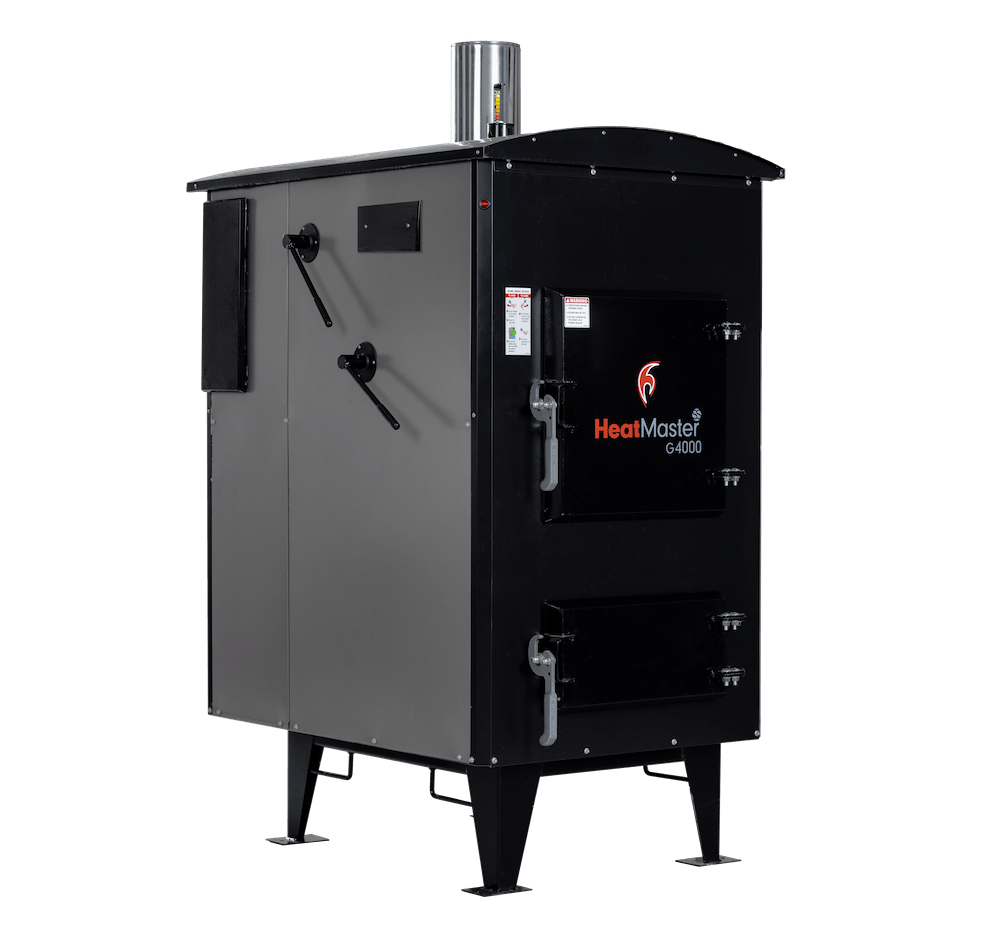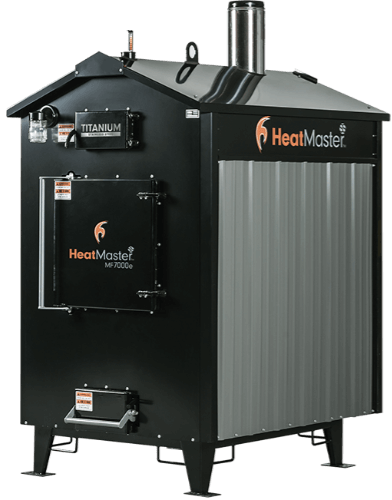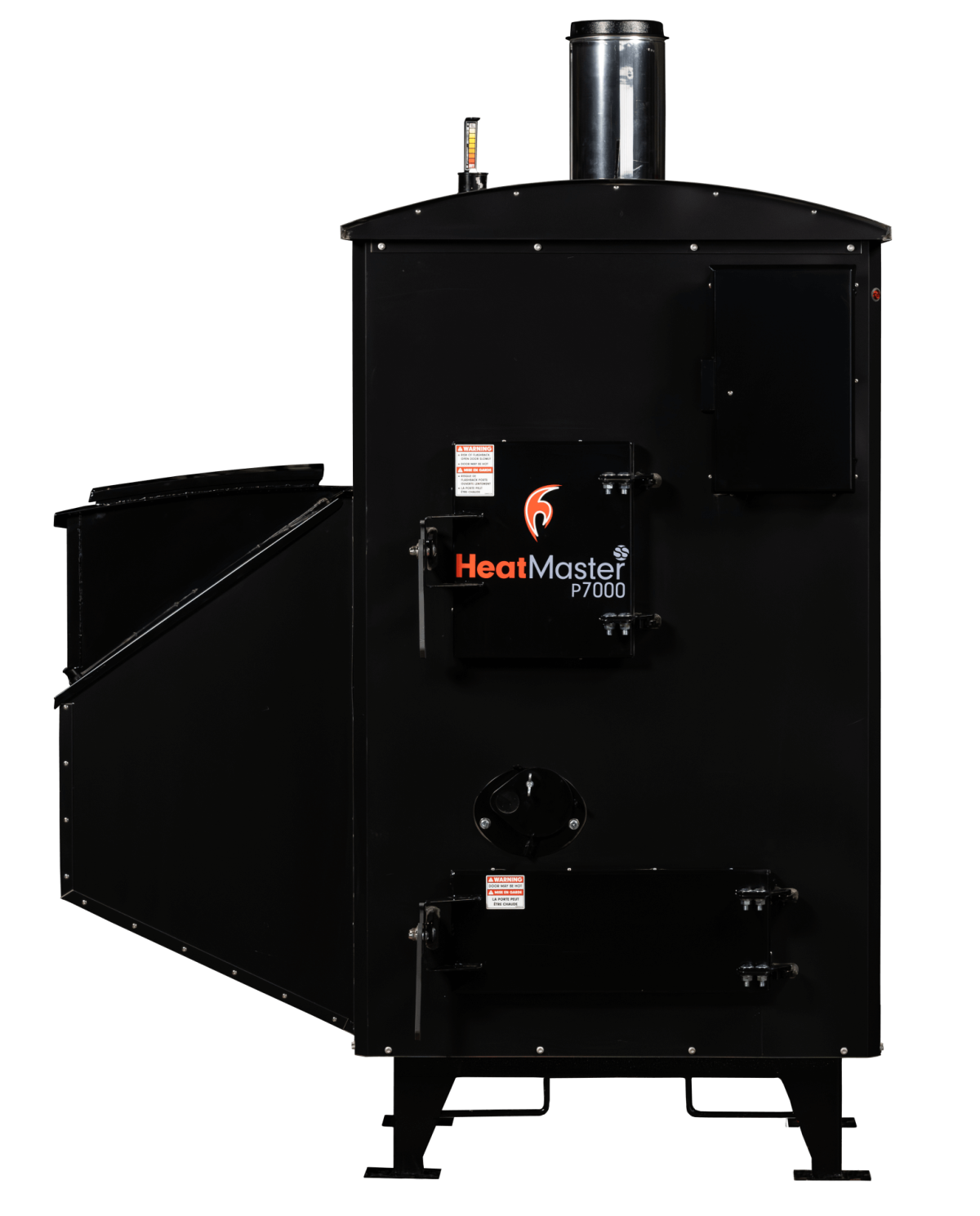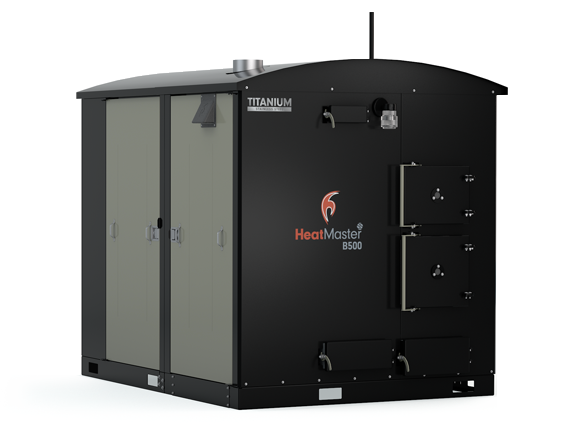Fuel Types for Outdoor Furnaces: Which is Best for You?
The type of fuel your outdoor furnace runs on is going to be a big factor in your operating costs and environmental impact. It is important to think through the various types of outdoor furnace fuel and buy the boiler that is going to be the best for your lifestyle and geographical area.
- In this outdoor furnace fuel guide, we’ll cover all the major topics:
- Wood Fuel for Outdoor Furnaces
- Biomass Fuel Types
- The Challenges of Multi-Fuel Outdoor Furnaces
- Coal for Outdoor Furnaces
- Outdoor Boiler Fuel and Environmental Impact
- Choosing an Outdoor Furnace
Wood Fuel for Outdoor Furnaces
Wood logs are a classic fuel for outdoor furnaces. This is a great option if you have access to wood resources, the space to store logs, and a few extra tools. With a high moisture content, wood needs a place to season – or dry out – to reduce moisture content so it can produce energy at the highest efficiency without creosote and ash build-up. This means to be prepared for storing wood as it dries for at least a couple of years.
If you don’t have access to free wood or want to avoid the labour, it is often available through local dealers but this can be an expensive option depending on your area. Look at what wood costs in your area compared to other fuels to see if a wood burning outdoor furnace is the right option for you.
HeatMasterss G Series is an easy to operate wood outdoor furnace that maximizes the energy potential of wood, burning efficiently with little or no waste.
Biomass Fuel Types
Biomass is a large category ranging from wood chips to corn husks and plant materials. Each type of biomass fuel has various costs, density, and moisture content.
Biomass boilers work by feeding materials – either automatically, semi-automatically, or by hand – into the chamber where the fuel is ignited. HeatMasterss B Series furnace is fully automated and designed to transfer the maximum amount of heat from the fire to the water jacket. Let’s run through the different kinds of fuel types that can be used in a biomass outdoor furnace.
Wood Pellets
Wood pellets are a dense form of biomass that are slightly more expensive than wood chips. Made from waste and excess material from wood manufacturing, wood pellets are uniform in size and work best in automated systems. Because wood pellets contain less that 4% moisture they can be dusty. HeatMasterss B Series has a Guardian Air Lock that ensures proper fuel flow and prevents fire from burning back to the fuel bin.
Wood Chips
Wood chips are produced by land clearing and waste from forest management. Typically less expensive than wood pellets, wood chips come in various sizes, quantities, and moisture content. Moisture content is key in how efficient wood chips will burn. Because chips are considered fairly dry at about 30% moisture content – which is still a large amount of moisture – chips shouldn’t be stored for long periods as they tend to degrade. Outdoor furnaces that operate at high temperatures can handle wetter chips as they dry and burn within the firebox.
Non-Wood Biomass
Straw, hay, and wheat husks are some of the waste agricultural materials that can be used in biomass outdoor boilers. With the gasification process, boilers use waste agricultural materials as fuel ensuring a stable supply of energy. This is a good option for commercial applications where you have access to waste that otherwise would need to be disposed of. With an outdoor furnace, waste is turned into heat for barns and outbuildings cleanly and effectively.
The Challenges of Multi-Fuel Outdoor Furnaces
The different characteristics of biomass fuel off some unique challenges. Different biomass fuels do not combust the same nor do the ashes burn at the same temperature. Outdoor furnaces that aren’t designed to take this into account can become clogged or burn inefficiently. To regulate boiler burns a controller is needed to continuously adapt to the requirements of the specific fuel being used. HeatMasterss has engineered their outdoor furnaces to handle the various methods of combustion while burning at maximum efficiency.
Coal for Outdoor Furnaces
Depending on your geographical region, coal is a common boiler fuel. Coal is easy to load and doesn’t rot or degrade. Most types of coal burn almost smokeless and are simple to buy in bulk and store.
There are several grades of coal – anthracite, bituminous, and sub-bituminous. Anthracite coal is the highest grade coal that is hard to ignite but burns relatively smokeless. It has the highest percentage of fixed carbon for a clean coal burn. Bituminous coal is the most abundant and widely used coal grade. It has a high heat potential but does release smoke as it burns. Sub-bituminous has less carbon than bituminous and more moisture making it smoke more.
The HeatMasterss outdoor coal furnace is built to burn coal at peak efficiency so you save time, money, and energy.
Outdoor Boiler Fuel and Environmental Impact
Burning wood has been around since the first people discovered fire. Fire is nature’s way of burning off the dead or dying trees and making way for the next generation of forest. Using naturally occurring dead trees and wood debris that builds up is helping the land stay healthy. Additionally, using wood waste or agricultural waste for energy independence is sustainable and renewable.
The main problem with most fires is the smoke, fumes, and emissions that comes with it. And the process used in an outdoor wood boiler should not be confused with incineration. Incineration is a very dirty way of getting rid of waste that creates toxic emissions. With modern gasification boilers, owners can burn wood, coal, and other biomass fuels efficiently and effectively with significantly less carbon emissions.
The process of gasification optimally burns fuel using up to 95% of the fuel energy to provide heat where you need it. As a carbon-neutral process, gasification releases the same amount of carbon as decomposing biomatter. Properly burned biomass fuel or wood is broken down into smoke and ash that then is transferred as heat for your home, barn, pool, hot tub, outbuildings, and more.
Choosing a Outdoor Furnace Fuel
As we have outlined in this guide there are several factors to consider when thinking about the type of outdoor furnace and fuel that will work best with your needs.
- Energy savings
- Availability of fuel
- Flexibility
- Fuel costs
- Labour
- Storage
- Protection from weather
- Extra tools needed
We have given you a lot to think about as you search for the perfect outdoor furnace fuel. In addition to all this, you should determine what your needs are from your outdoor boiler. Finding the right outdoor furnace depends on the heat load you expect to need. This includes:
- Size of your home
- Outbuildings
- Pools or hot tubs
- Temperature you want
- Types of winters
Each fuel type has its advantages and disadvantages. Wood, for example, needs extra tools and labour to harvest and store. And different types of biomass need a supply source and specialized storage. Whatever fuel you choose, outdoor furnaces offer high efficiency, flexibility, and warm comfort for a long time.
The HeatMasterss Advantage
The long-term investment in the safety and comfort of your family shouldn’t be taken lightly. Taking control of energy costs, saving time, and less hassle are the top reasons people consider an outdoor furnace. HeatMasterss furnaces are designed with the features, advantages, and benefits that are right for you, your lifestyle, and your independence.
Our outdoor furnaces offer fuel flexibility and give you the freedom from fluctuating fossil fuel prices. The HeatMasterss team is continually finding ways to improve our outdoor furnaces so they give you unlimited heat and hot water for any sized space and applications at a low investment.
Engineered for longer burn times and reduce creosote, our outdoor furnaces are built to give optimal performance in all conditions. We use Titanium enhanced 409 stainless steel that resists corrosion, transfers more heat, and doesn’t crack or warp.
For easy maintenance, we designed quick cleaning systems to keep the ash from building up and heat exchange tubes clean so you don’t have to think about any extra tools. We have multiple outdoor furnace options that work with almost any existing heat system. Each of our outdoor furnace series is built for quality, efficiency, and performance no matter what fuel they use.
Contact our team to discuss the advantages of an outdoor wood furnace and which fuel types are right for you— find a local authorized HeatMasterss dealer.




